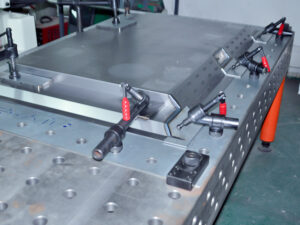The minimum distance between bends in a sheet of metal is usually equal to the thickness of the material being bent. This distance is called the “bend radius” and is measured from the inside edge of the bend to the center axis (i.e., the center line of the material).

For example, if you are bending a 1 mm thick sheet of metal, the minimum bend radius is 1 mm. This means that the distance between the two bends should be at least twice the thickness of the material, or in this case 2 mm.
It is worth noting that the minimum bending radius may vary depending on the material used, the thickness of the material, and the type of bending operation being performed. Factors such as the angle of bending, the amount of material being bent and the type of bending operation should all be considered when determining the minimum distance of sheet metal bending. To ensure the accuracy of the bending radius, it is important to use the proper tools and techniques when bending sheet metal, so a professional manufacturer should be sought.
Custom Metal Box Manufacturers | Custom Sheet Metal Enclosures | Custom Aluminum Box | Custom Sheet Metal Boxes | Custom Metal Boxes | Sheet Metal Supplier | Steel Box Manufacturers | Sheet Metal Box Manufacturers | Custom Made Metal Boxes | China Sheet Metal Manufacturer | Outdoor Vending Machine Enclosures | Equipment Enclosures | Machinery Enclosures | Machine Enclosure | Machine Enclosures | Industrial Machine Enclosures | Metal Enclosures for Electronics | EV Charger Outdoor Enclosure | Outdoor EV Charger Enclosure | EV Charger Enclosure | Custom Aluminium Box | Custom Steel Box | Metal Box Supplier | Metal Enclosure Manufacturer | Sheet Metal Enclosure Manufacturers | Metal Enclosure Box Manufacturer | Metal Enclosure Manufacturer | Aluminium Box Manufacturer | Outdoor Equipment Enclosures